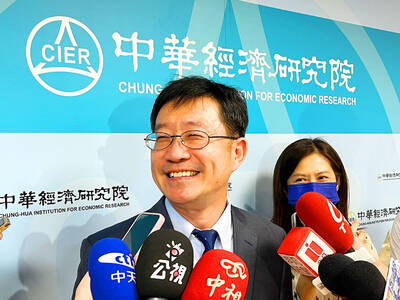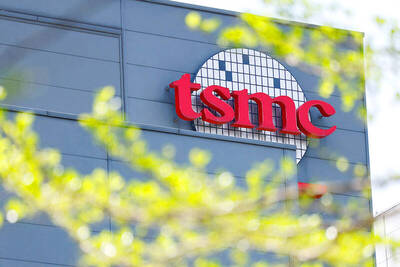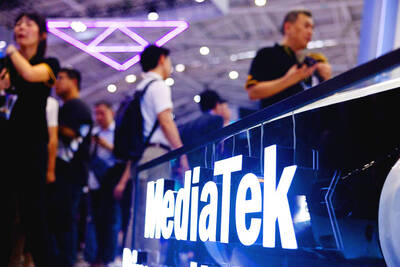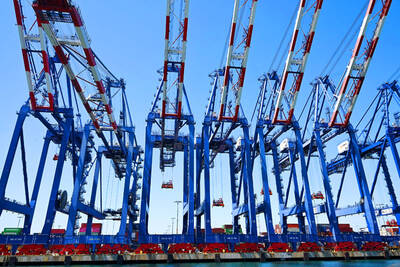International Data Corp (IDC) yesterday released its Taiwan information and communication technology (ICT) predictions for this year and said growth in the entire PC industry would hinge on mini-notebook computers.
“Despite the global economic downturn and companies’ efforts to cut back on capital expenditure, various technologies still have plenty of room for growth, our analyses show,” said Alan Tsao (曹永暉), research manager at IDC’s enterprise solutions group.
The research house said the corporate spending in Taiwan would grow 1 percent, from US$6.33 billion last year to US$6.39 million this year.
The government’s aggressive spending programs, Tsao said, would be counterbalanced by pullbacks in the local financial services and manufacturing sectors.
In terms of hardware development, Helen Chiang (江芳韻), research manager in the PC and peripherals group, said that without doubt mini-notebooks would be the growth engine for the PC industry.
Chiang did not provide growth projections.
Compared with last year, “users will see increased availability in screen sizes, mini-notebooks manufactured by multiple computer vendors and further price reductions,” she said.
Continued decline in panel prices and large volume discounts on central processing units (CPU) would keep mini-notebook prices low, IDC said.
With more PC vendors entering the mini-notebook market this year, the researcher said the sector could be divided into traditional notebooks, netbooks and ultra-mobile PCs based on screen sizes and the CPUs used, such as Atom and Menlow.
Furthermore, 16:9 widescreen liquid-crystal displays (LCD) would become the mainstream configuration as suppliers increase their capabilities on those specifications. The supply-side driven trend would take hold as content is designed for 16:9 screens and full high-definition gets implemented using LCDs, Chiang said.
Presently, 19-in and 22-in screens take up the bulk of the LCD market share — 40 percent and 25 percent respectively. After better resolution is introduced, Chiang said sale of screens larger than 22-in should experience tremendous growth.
Chiang was also optimistic about micro-projectors. Previously, 70 percent of projectors were sold to businesses. With the introduction of micro-projectors and growing interest in multimedia content, it will be interesting to see how this technology fares this year, Chiang said.
Turning to broader trends, IDC saw green information technology getting stronger as companies become more environmentally conscious while cutting costs. The migration to energy-efficient equipments and the consolidation of information and storage systems would be the way ahead, Chiang said.
IDC said cloud computing would diversify into software-as-a-service, platform-as-a-service and hardware-as-a-service segments, with international as well as local companies capitalizing on these opportunities.
Lastly, fixed mobile convergence, Web 2.0 and a changing IT regulatory landscape would also provide many business opportunities this year, IDC said.

WEAKER ACTIVITY: The sharpest deterioration was seen in the electronics and optical components sector, with the production index falling 13.2 points to 44.5 Taiwan’s manufacturing sector last month contracted for a second consecutive month, with the purchasing managers’ index (PMI) slipping to 48, reflecting ongoing caution over trade uncertainties, the Chung-Hua Institution for Economic Research (CIER, 中華經濟研究院) said yesterday. The decline reflects growing caution among companies amid uncertainty surrounding US tariffs, semiconductor duties and automotive import levies, and it is also likely linked to fading front-loading activity, CIER president Lien Hsien-ming (連賢明) said. “Some clients have started shifting orders to Southeast Asian countries where tariff regimes are already clear,” Lien told a news conference. Firms across the supply chain are also lowering stock levels to mitigate

Six Taiwanese companies, including contract chipmaker Taiwan Semiconductor Manufacturing Co (TSMC, 台積電), made the 2025 Fortune Global 500 list of the world’s largest firms by revenue. In a report published by New York-based Fortune magazine on Tuesday, Hon Hai Precision Industry Co (鴻海精密), also known as Foxconn Technology Group (富士康科技集團), ranked highest among Taiwanese firms, placing 28th with revenue of US$213.69 billion. Up 60 spots from last year, TSMC rose to No. 126 with US$90.16 billion in revenue, followed by Quanta Computer Inc (廣達) at 348th, Pegatron Corp (和碩) at 461st, CPC Corp, Taiwan (台灣中油) at 494th and Wistron Corp (緯創) at

NEW PRODUCTS: MediaTek plans to roll out new products this quarter, including a flagship mobile phone chip and a GB10 chip that it is codeveloping with Nvidia Corp MediaTek Inc (聯發科) yesterday projected that revenue this quarter would dip by 7 to 13 percent to between NT$130.1 billion and NT$140 billion (US$4.38 billion and US$4.71 billion), compared with NT$150.37 billion last quarter, which it attributed to subdued front-loading demand and unfavorable foreign exchange rates. The Hsinchu-based chip designer said that the forecast factored in the negative effects of an estimated 6 percent appreciation of the New Taiwan dollar against the greenback. “As some demand has been pulled into the first half of the year and resulted in a different quarterly pattern, we expect the third quarter revenue to decline sequentially,”

RESHAPING COMMERCE: Major industrialized economies accepted 15 percent duties on their products, while charges on items from Mexico, Canada and China are even bigger US President Donald Trump has unveiled a slew of new tariffs that boosted the average US rate on goods from across the world, forging ahead with his turbulent effort to reshape international commerce. The baseline rates for many trading partners remain unchanged at 10 percent from the duties Trump imposed in April, easing the worst fears of investors after the president had previously said they could double. Yet his move to raise tariffs on some Canadian goods to 35 percent threatens to inject fresh tensions into an already strained relationship, while nations such as Switzerland and New Zealand also saw increased